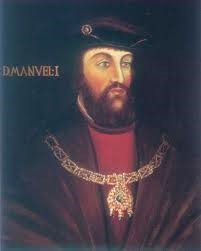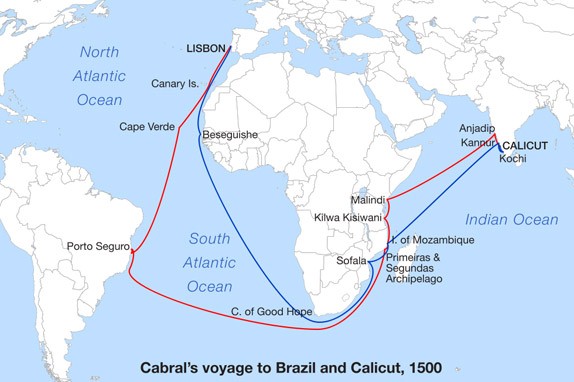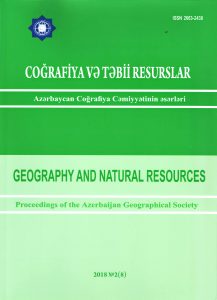FORTUNE OF PEDRO CABRAL, WHO HAD REACHED INDIAThe expedition left Brazilian coasts on May 2 with 11 vessels, reached south of Africa without any difficulties and entered the strong storm near coasts of the Indian Ocean, at some distant from the Cape of Good Hope. Four vessels met an accident and went down there. Bartolommeo Dias, whom the king Manuel I trusted, was lost in the ocean. It is interesting that, brother of Bartolommeo – Diego Dias separated from the expedition with his vessel, reached Madagascar Island and founded discovery of the largest island of Africa. But Pedro Cabral thought that, he died as others and continued his way without carrying out any search. The expedition reached the port of Malindi located in the south-west of Africa and sailed to Calicut (today’s Kozhikode).
Pedro Cabral, who reached India with some losses in accordance with considered plan, could found a factory in Calicut. But influence and authority of Muslim merchants impeded free activity of Portuguese and armed conflict occurred between tens of Muslims. About fifteen Portuguese seamen and talented writer Pero Vaz de Caminha were killed during that conflict. The city was bombed according to Cabral’s order and all vessels of Muslims were burned. Then alternative trade relation was founded in Cochin.1  Pedro Alvaresh Cabral (1467-1520) Portuguese, who was returning back at the beginning of 1501, lost another vessel near Mozambique and after salutary operation they sailed towards Green Cape Islands with four vessels. Diego Dias, who left the Madagascar Island by accident, met members of expedition in those islands and returned to motherland together with them. It should be especially noted that, one of vessels of the mentioned expedition had separated from the staff on south-eastern coasts of Africa after the expedition returned from India and reached Lisbon first of all. So, they were invited to the kingdom palace and gave all necessary information about the travel and happened tragic events. Why did I emphasize this fact? Cabral hadn’t justified hopes of the king. Though his expedition was larger than Vasco da Gama’s expedition for numbers of vessels and persons, he couldn’t achieve any satisfactory result. But, fortunately, Duarte Pereira survived and Brazil was discovered officially. The expedition, which had lost six vessels, came to coasts of the Pyrenean peninsula after a year and a half. It returned to the motherland with five vessels full of valuable goods on September 6, 1501. The king Manuel I, who didn’t pay any attention to the value of brought goods, was dissatisfied with the expedition’s result as the expedition hadn’t achieved considered goal. In spite of it, incomes of the expedition were more than twice.  King of Portugal Manuel I (1469-1521) The land discovered by Pedro Cabral was called “Terra Brasilis” or “Santa Cruz” on maps made in Europe in XVI century. But people called him “The land of parrots” or “The land of Brazil”. Pedro Cabral was debarred from the palace and Vasco da Gama was appointed commander of the next expedition organized in 1502, though Cabral was appointed second captain, he deviated from participation in that expedition. Former commander, who had lost all his fame, went to Beira Baixa in 1509 and lived there till the end of his life. But Manuel I issued salary for Pedro Cabral in 1515 for the discovery of “Vera Cruz”. Former commander, who was isolated from people and lived quietly, died in 1526. The sea traveler, who had been in coasts of four continents of the world – Europe, South America, Africa and Asia during only one travel, was buried in the general churchyard of the gothic church “Igreja da Graca”. Rare trees were found in his garden. Those trees began to be brought to Europe as raw material for production of red-violet paint and discovered land began to be called Brazil in accordance with its name (pau-brasil). Ordinary tombstone found in XIX century proves that, personality of the author of “The great discovery” wasn’t considered significant in XVI century. And the writing found on the tombstone of the seaman’s wife Isabel Kashtru shows that, she was maid of the daughter of the Portugal king Juan III.  The route of Pedro Cabral’s travel (1500-1501) The Brazilian historian Fredrick Adolfo Varnhagen identified Pedro Cabral’s neglected grave in 1848. Brazil and Portugal celebrated his 500th birth anniversary in 1968. Monuments were put to him in Lisbon and Rio de Janeiro for his services in appropriation of Brazil. All important discoveries made before XVI century are enigmatic. Christopher Columbus, who wanted to discover a large continent for his heirs, has been buried in the Cathedral temple of Seville, Pedro Alvaresh Cabral, who had kept the secret of the king Manuel I till the end of his life, has been buried in the churchyard “Igreja da Graca”, Amerigo Vespucci and Duarte Pacheco Pereira have been buried in Lisbon’s town churchyard as common citizens. What were purposes of Portuguese monarchs? Did they want to swindle Spaniards in order to prevent armed conflicts? They could partly achieve this goal. Portuguese could swindle Spaniards by means of priests – owners of Saint Peter’s throne. They did it without letting anybody to understand the situation. Of course, the best way was to use carelessness as a pretext. Pedro Cabral used this way in 1500 and made Brazil property of Portugal. Credulous Spaniards, who were in euphoria after Christopher Columbus’s first travel, were obliged to believe the nonsense contrived at the end of XV century. They preferred territories located near the Caribbean Sea to Brazil. Best regards, the member of Azerbaijan Geographic Society, President grant holder on literature, laureate of the “Golden pen” award, writer/ investigator Ramiz Daniz email: [email protected], [email protected] 1 История средних веков. Абрамсон М. Л., Кириллова А. А., Колесницкий Н. Ф. и другие. Под редакцией Колесницкого Н. Ф. – 2-е изд. исп. и доп. – М., «Просвещение», 1986. стр.394.
 17562 17562 |
|








 AZ
AZ EN
EN RU
RU








